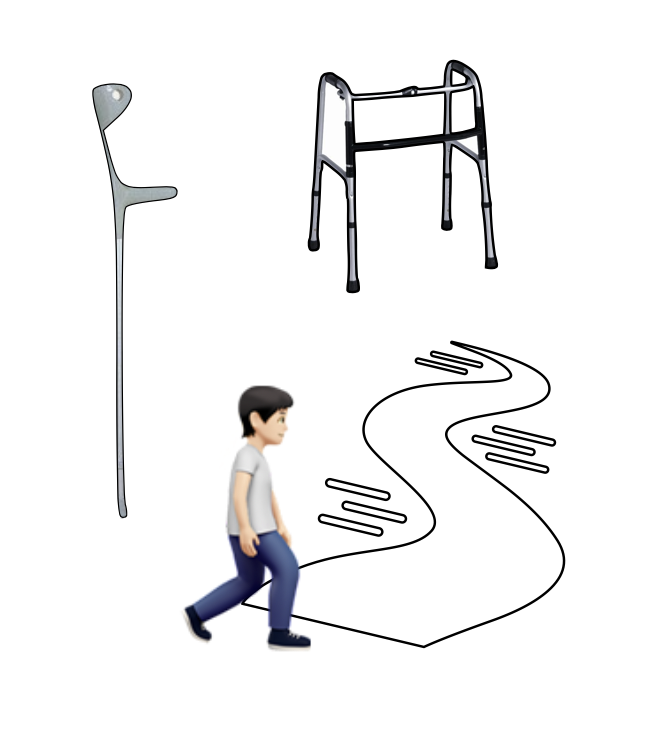Pain & Sickness

Figure: Illustration recalling the ambulation sickness questionnaire.
Pain is one of the long-term compliances that can manifest after a stroke event. Pain incidence can vary across the stroke survivor population. Pain sensation after the MRI scanning was recorded. A scale ranging between 0-100 was used.
The Sickness Impact Profile (SIP) scale is a commonly used to assess the quality of life [1]. The SIP scale is composed of 136 items divided into 12 subscales, exploring three main aspects: physical, social, and emotional functioning. Van Staten et al. [2] proposed a shorter and stroke-adapted version of the SIP (SA-SIP) including 30 items subdivided into 8 subscales exploring both physical and psychosocial sickness dimensions. The sickness of body care and movement, mobility, household management and ambulation corresponds to the physical dimension. The sickness in social interactions, communication, emotional behaviour and alertness behaviours corresponds to the psychosocial dimension.
| Score | Info |
|---|---|
| pain | Pain |
| sip_alert | Alertness behaviour (SA-SIP) |
| sip_amb | Ambulation (SA-SIP) |
| sip_body | Body care and movement (SA-SIP) |
| sip_com | Communication (SA-SIP) |
| sip_emo | Emotional behavior (SA-SIP) |
| sip_house | Household (SA-SIP) |
| sip_mob | Mobility (SA-SIP) |
| sip_physical | Physical function (SA-SIP) |
| sip_psychosoc | Psychosocial (SA-SIP) |
| sip_social | Social (SA-SIP) |
SA-SIP=Stroke-Adapted Sickness Impact Profile.
1. de Haan, R., et al., Measuring quality of life in stroke. Stroke, 1993. 24(2): p. 320-7.
2. van Straten, A., et al., A stroke-adapted 30-item version of the Sickness Impact Profile to assess quality of life (SA-SIP30). Stroke, 1997. 28(11): p. 2155-61.